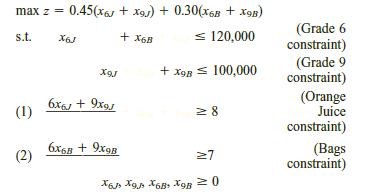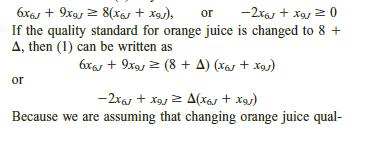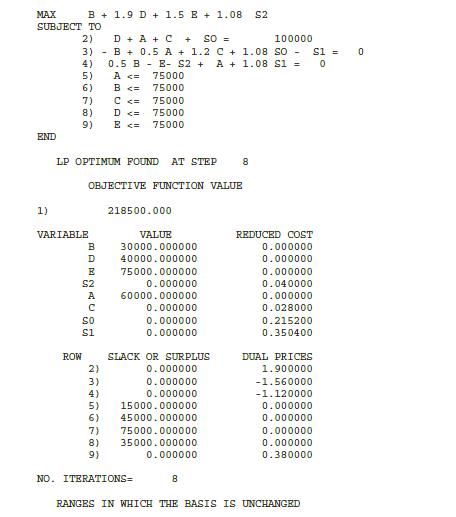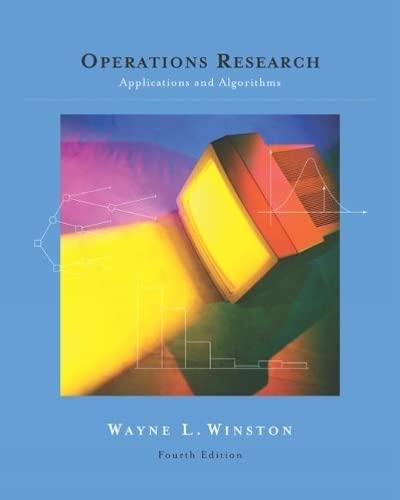31 In this problem, we discuss how shadow prices can be interpreted for blending problems (see Section
Question:
31 In this problem, we discuss how shadow prices can be interpreted for blending problems (see Section 3.8). To illustrate the ideas, we discuss Problem 2 of Section 3.8. If we define x6J = pounds of grade 6 oranges in juice x9J = pounds of grade 9 oranges in juice x6B = pounds of grade 6 oranges in bags x9B =pounds of grade 9 oranges in bags then the appropriate formulation is

Constraints (1) and (2) are examples of blending constraints, because they specify the proportion of grade 6 and grade 9 oranges that must be blended to manufacture orange juice and bags of oranges. It would be useful to determine how a slight change in the standards for orange juice and bags of oranges would affect profit. At the end of this problem, we


explain how to use the shadow prices of Constraints (1) and (2) to answer the following questions:
a Suppose that the average grade for orange juice is increased to 8.1. Assuming the current basis remains optimal, by how much would profits change?
b Suppose the average grade requirement for bags of oranges is decreased to 6.9. Assuming the current basis remains optimal, by how much would profits change?
The shadow price for both (1) and (2) is 0.15. The optimal solution is x6J 26,666.67, x9J 53,333.33, x6B
93,333.33, x9B 46,666.67. To interpret the shadow prices of blending Constraints (1) and (2), we assume that a slight change in the quality standard for a product will not significantly change the quantity of the product that is produced.
Now note that (1) may be written as




Step by Step Answer:

Operations Research Applications And Algorithms
ISBN: 9780534380588
4th Edition
Authors: Wayne L. Winston





